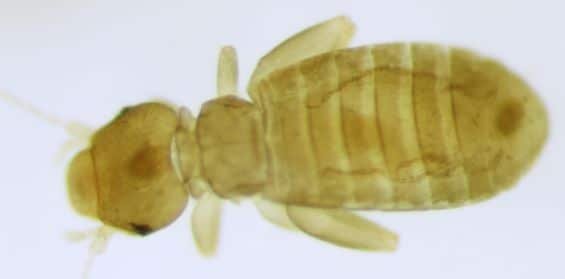Psocid Infestations in Straw Bale Homes
Have you seen a bunch of these in your house? Do you have what you thought might be termites only to discover that termite treatments don't do much to battle the infestation? If so, you likely have an infestation of psocids.
What are Psocids?
These tiny little insects are also known as booklice and bark-lice and are known to feed on old books and other natural materials. It's rare to have them infest straw bale homes, but it can happen.
In most, if not all, cases of straw bale home infestation, the insects come in on the bales and are already in the straw when you build your straw house.
They take a relatively high level of moisture to live, so keeping your bales dry (which is best practice for construction!) will almost always end any infestations. Learn more about Choosing Straw Bales for Home Construction here.
Protecting Straw Bale Homes from Psocids
Let’s dive a bit deeper into information about:
These insects
How to stop an outbreak
How to minimize your risk of infestation to start with
More About The Bugs…
Psocid infestations are typically more prevalent in areas with high moisture content and which are often contaminated with microscopic mold.
The psocid's life cycle includes eggs, four nymphal stages, and adult females. Eggs usually take about 21 days to hatch, and adults tend to live for between 20 and 100 days. This puts an entire lifecycle somewhere between 40 and 120 days.
The sooner you discover an infestation and start to take action, the better, as females can each lay up to 2 eggs a day during their adult life. That's a reason for the sudden outbreaks that are most often noted.
How To Handle An Infestation
The best way to handle an existing infestation is to dry out the space in question. The psocids take a high level of moisture to survive so a dry and hot space will quickly solve the problem.
Because of the number of eggs that each female can lay, you'll need to keep the location hot and dry for at least four (4) months to be sure of the total removal of the problem.
It has been said that bringing a room to 120 degrees F for a short period can also kill the insects completely.
The challenge with that approach is getting that 120 degrees F to reach the internal sections of the bale walls, as the insulation value is what is so loved about these homes!
As we've seen in straw bale wall fire testing, transferring high or low temperatures through a bale wall is difficult! This means that the likelihood of achieving a sustained 120 degrees F in the center of a bale wall is low.
How to Prevent an Infestation
If you are concerned about infestation potential, one way to lower your risk of ever getting an infestation is to treat your bales during installation with borax. Just a gentle sprinkle of borax on each course of bales during installation can be very helpful for eliminating any pest problems.
To be clear, I have not seen this particular issue on any builds I have participated in, and Andrew Morrison (the now-retired Founder of the Strawbale.com community) had only seen it twice in a bale structure. Neither Andrew nor I use borax as part of the standard process on any straw bale home builds we have been involved in.
I make the suggestion only for those homes that are at high risk. For example, homes that will likely experience high moisture levels in the walls due to a lack of dehumidifying system and high relative humidity in the environment. Otherwise, I don't think the borax is necessary.
Bale on,
Timbo
Want to learn about straw bale houses and how to build one?
Want to do so for FREE?
Sign up for our totally free 16 Day Straw Bale eCourse!
Find out more HERE.
Last Updated 2/10/2025
